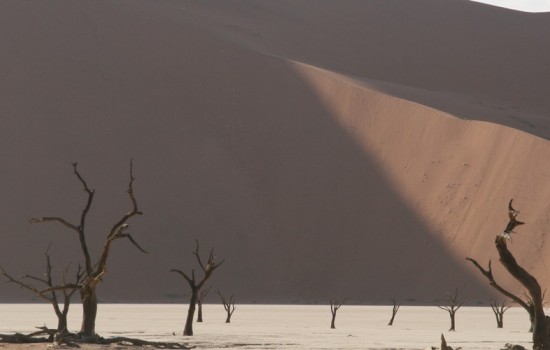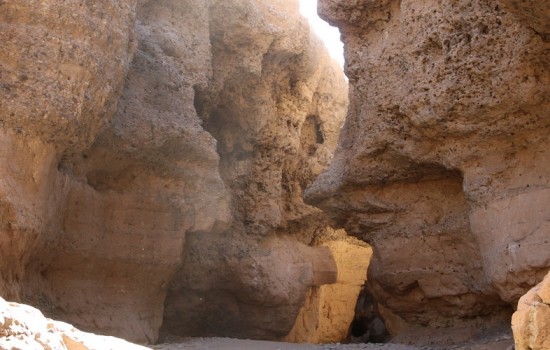Sossuvlei & Sesriem
Als erkent agent voor NWR (Namibia Wildlife Resorts) beschikken wij over een wijde kennis. Daarom kunnen wij alle accommodaties
en sommige activiteiten vooraf boeken. Alle diensten en adviezen zijn gratis en zonder verder verplichtingen.

Sossusvlei is a clay pan in the central Namib Desert, lying within the Namib-Naukluft National Park and in the Sesriem area. Fed by the Tsauchab River, it is known for the surrounding high, red sand dunes, which forms a major sea of sand. Very little vegetation surviving here, such as the camelthorn tree, is watered by infrequent floods of the Tsauchab River, which eventually slowly soaks into the underlying clay.
Dead Vlei is as Sossusvlei, surrounded by the highest sand dunes in the world, some reaching up to 300 meters, which rest on a sandstone terrace. The clay pan was formed after rainfall through a period of hundreds of years, when the Tsauchab river flooded, creating temporary shallow pools where the abundance of water allowed camel thorn trees to grow. When the climate changed and drought hit the area, the sand dunes encroached on the pan blocking the river from the area.
The trees died, as there no longer was any water to survive. There are some species of plants remaining, such as salsola and clumps of !nara, adapted to surviving off the morning mist and very rare rainfall. The remaining skeletons of the trees, which are believed to be about over 900 years old, are now black because the intense sun that has scorched them. Due to the dryness the wood does not decompose and form an eerie spectacle especially early morning or late in the day.

Sesriem is a small settlement located in the Namib Desert, in Namibia, close to the southern end of the Naukluft Mountains. It is especially known because the “Sesriem gate” is the main access point to the Namib-Naukluft National Park for visitors entering the park to visit the nearby tourist attraction of Sossusvlei. As many “settlements” in the Namib, Sesriem is essentially a filling station with basic services such as public telephones and a couple of small kiosks where travellers can get general supplies such as food and water. In the surroundings of Sesriem there are several accommodations.
Sesriem is also known for the Sesriem Canyon, about 4 km from Sesriem itself, which is the second most important tourist attraction in the area after Sossusvlei. It is a natural canyon carved by the Tsauchab rivier in the local sedimentary rock, about a kilometre (0.6 mile) long and up to 30 meters (100 feet) deep. The name Sesriem is Afrikaans and means “six leather straps”, given by settlers returning from the Dorsland Trek who had to attach together six straps (made of oryx hides) in order to reach buckets down into the canyon to scoop up water. The Sesriem Canyon is only two metres (6.5 feet) wide in some places, and has a portion that permanently contains water, which many animals use.


